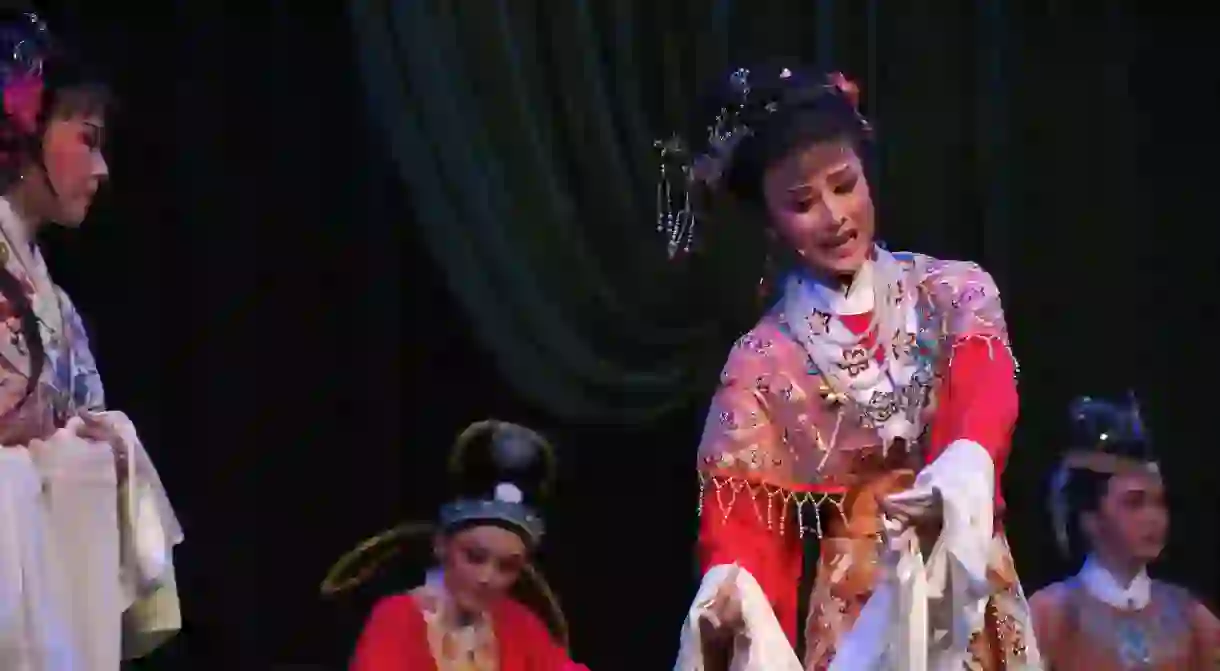Shaoxing Opera: The Grassroots Movement Led by Female Artists

Shaoxing Opera, one of over 360 opera genres in China, can be appreciated by all for its elegant and soft melodies. But to the educated audience member, Shaoxing Opera is so much more than entertainment. Created in 1906 in rural Zhejiang province, this grassroots performance style embodies the paradox of revolutionary traditionalism. Its history speaks of the lasting importance of community and represents shifting gender roles throughout the 20th century.
Before 1906, little Sheng County, Zhejiang was not known for much other than farming. Its residents lived simple lives tilling, planting, and harvesting with the seasons. For entertainment, the community gathered to listen to ballads about the daily lives of community members, mostly taken from conversations between farmers. But the Second Opium War shook the local economy, and suddenly residents began looking beyond agriculture to make money. The entrepreneurial folk in the county saw a business opportunity in the ballads and began to monetize the art form. Soon, the musical style grew, incorporating simple acting and instrumental accompaniment.
In 1906, Sheng County resident Chen Wanyuan gathered local artists together at his house to perform a full opera based on the musical style that had been slowly growing over the past decades. The show was a great success, and over time, more and more counties were invited to perform. Thus, Shaoxing Opera was born.

In the beginning, Shaoxing Opera followed conventions. While it departed from Beijing opera in its preference for delicate lyricism, it employed only male actors to fill every role. It wasn’t until Wang Jinshui saw a Shaoxing performance in Shanghai that this all changed.
Wang, originally from Sheng County, was deeply impressed by the prosperous artistic atmosphere of Shanghai in the 1920s. Seeking to bring a similar atmosphere back to his home, Wang returned to Sheng County in 1923 and opened a class for women to study Shaoxing.
The class, it turns out, was revolutionary. In 1920s China, women had two primary options in life: marry young or be sent to a factory to work. Shaoxing Opera gave women an alternative. Assuming that operas performed by women would lower the value of the art, the local government refused to fund the classes. Wang’s school was shut down after six years, but not before the first wave of female artists was ready to take on the world.

The female performers would not be silenced. The 1929 market crash in the United States forced factory closures throughout China, sending women in droves to copies of classes like Wang’s, where the women received three months of training before participating in performances to make money.
By the 1930s, the opera style became all female, with women performing roles of both genders.
Since that time, Shaoxing Opera has only grown in popularity, but it has never strayed from its roots. As its birthplace becomes increasingly urbanized, the performance style still focuses on humble themes of the daily life that once defined Sheng County.














